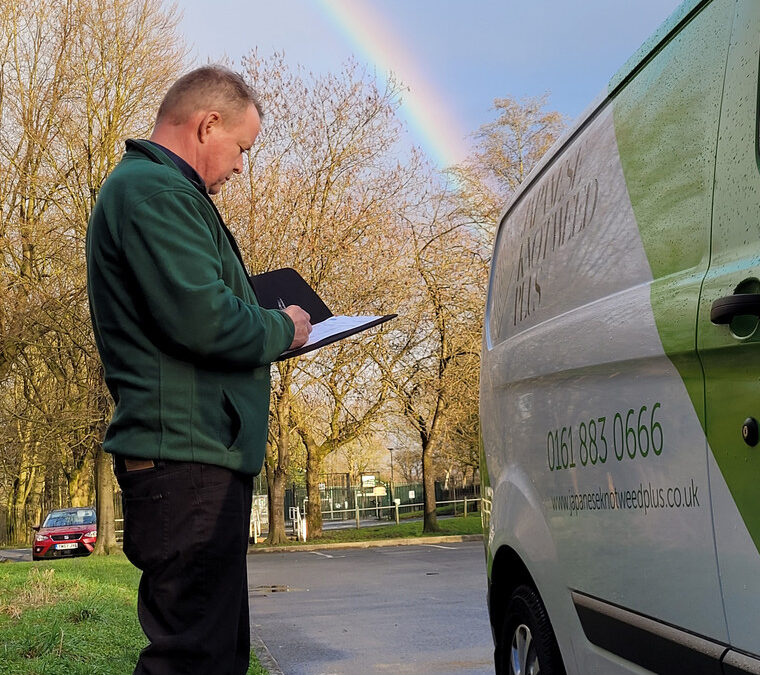The Importance of Early Detection and Treatment for Japanese Knotweed
Learn why early detection and treatment of Japanese knotweed are critical to prevent it from spreading and causing damage to your property and the environment.
Japanese Knotweed is an invasive plant species that has become a major problem in many parts of the world. It is native to Japan and was first introduced to the UK in the mid-19th century as an ornamental plant. Since then, it has spread rapidly, and it is now considered one of the most invasive plants in the UK and many other countries.
Japanese Knotweed is a robust plant that can grow up to 10cm a day during the growing season, and it has the potential to cause significant damage to buildings, roads, and other infrastructure. It can also crowd out native plant species, leading to a decline in biodiversity. Therefore, it is essential to detect and treat this invasive species as early as possible to prevent it from spreading and causing damage to your property and the environment.
- What is Japanese Knotweed?
- How Does Japanese Knotweed Spread?
- The Importance of Early Detection
- Signs of Japanese Knotweed Infestation
- Treatment Options for Japanese Knotweed
- FAQs about Japanese Knotweed
- Conclusion
What is Japanese Knotweed?
Japanese Knotweed (Fallopia japonica) is a perennial plant that is native to Japan. It was first introduced to the UK in the mid-19th century as an ornamental plant but has since become an invasive species. The plant can grow up to three meters tall and has distinct reddish-brown stems and large heart-shaped leaves.
How Does Japanese Knotweed Spread?
Japanese Knotweed can spread rapidly through the soil, water, and transport of soil or plant material. The plant can grow from small fragments of its rhizome, which can easily be spread by machinery, animals, or humans. Once established, Japanese Knotweed can also produce thousands of seeds, which can be dispersed by the wind and water.
The Importance of Early Detection
Early detection is essential to prevent Japanese Knotweed from spreading and causing damage to your property and the environment. The plant can quickly grow and spread, making it difficult and expensive to control once it has become established. Therefore, it is essential to detect and treat the plant as early as possible to prevent it from causing damage.
Signs of Japanese Knotweed Infestation
There are several signs of Japanese Knotweed infestation that you can look out for, including:
• Large heart-shaped leaves with pointed tips • Reddish-brown stems that are bamboo-like in appearance • Rapid growth of up to 10cm a day • Clusters of small white flowers in late summer and early autumn • A thick network of underground stems (rhizomes)
Treatment Options for Japanese Knotweed
There are several treatment options available for Japanese Knotweed, including chemical treatments, physical removal, and biological control. The most effective method of treatment will depend on the severity of the infestation and the location of the plant.
Chemical treatments involve the use of herbicides to kill the plant. Physical removal involves digging up the plant and its roots, which can be a time-consuming and expensive process. Biological control involves the introduction of natural enemies of the plant, such as insects or fungi, to control its growth.
FAQs about Japanese Knotweed
- Is Japanese Knotweed harmful to humans?
No, Japanese Knotweed is not harmful to humans. However, it can cause damage to buildings and infrastructure.
- Can Japanese Knotweed be composted?
No, Japanese Knotweed should not be composted as it can easily regrow from small fragments of its rhizome.
Yes, there are physical and biological methods of controlling Japanese Knotweed that do not involve the use of chemicals. Physical methods include digging up the plant and its roots, which can be time-consuming and labor-intensive. Biological control involves introducing natural enemies of the plant, such as insects or fungi, to control its growth.
- Can Japanese Knotweed damage my property?
Yes, Japanese Knotweed can cause significant damage to buildings, roads, and other infrastructure. The plant’s large and extensive root system can grow through concrete and asphalt, causing structural damage.
In conclusion,
early detection and treatment of Japanese Knotweed are essential to prevent it from spreading and causing damage to your property and the environment. It is crucial to be aware of the signs of infestation and to take action as soon as possible. There are several treatment options available, and the most effective method will depend on the severity of the infestation and the location of the plant. If you suspect that you have Japanese Knotweed on your property, it is important to seek professional advice to ensure that it is safely and effectively removed. By taking early action, we can help prevent the spread of this invasive species and protect our environment.
